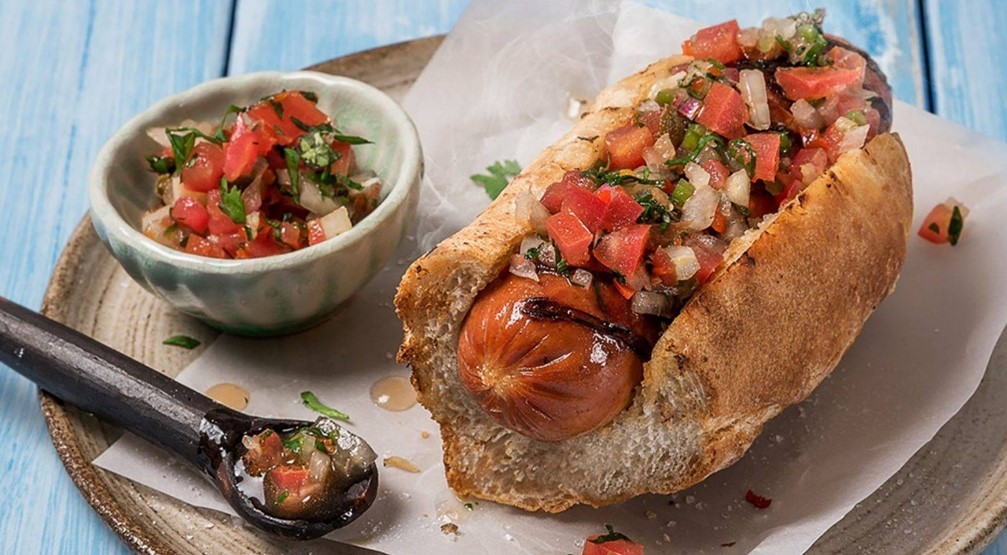Culinary Translation: Cultural and linguistic challenges
By Millaray Hurtado
In Chile, September 18 is approaching, along with its delicious holiday dishes. Every September, Chileans get together with their family and friends around a grill to celebrate the anniversary of independence from Spain. Nowadays, this holiday has crossed national borders, so tourists from all over the world come to enjoy this festive event. At the same time, Chileans abroad seek to reconnect with their roots through typical dishes.
As international tourists take an interest in traditional Chilean food, there is a big challenge for restaurants seeking to offer their dishes to non-Spanish-speaking guests. That’s where we translators come in, and we need to use the best of our abilities to bring out the flavors of this land. Fortunately for us, there is a field of translation that studies and guides the adaptation of texts about food: culinary translation, also known as gastronomic translation.
Culinary translation covers different texts from the food industry, including menus, recipes, catalogs, even literary and audiovisual texts. Each kind of text brings different translation challenges, depending on the scope of the text and its intended audience. In any case, all culinary texts contain important cultural values that we must handle carefully when translating them into another language.
Interculturality in Culinary Translation
Both languages and food are specific and distinctive elements of a given culture. We can even say that they are not only part of culture, but they are culture. In this context, the culinary translator plays the role of a cultural intermediary, so we should always think about how to translate the text into the target culture with due respect for the culture of origin. This leads us to the old translation dilemma: To what extent do we bring the text to the reader, or bring the reader to the text?
Of course, there is no single, definitive answer to this long-standing debate. Some authors note that the degree to which we domesticate or foreignize a text, that is, how much we adapt it or keep it close to the original, will depend on the kind of text and its scope, as we mentioned above. We could imagine keeping a translation close to the original when we translate foods in literary texts. But, in some cases, restaurants might prefer to adapt the original names of the dishes in their menu to help foreign diners understand them.
In linguistic terms, we must consider that culinary texts are usually full of culturemes, which are linguistic units with a particular cultural value. In these kinds of texts, culturemes include not only the names of dishes and their ingredients, but also traditional cooking utensils or techniques. It is essential that the translator has a deep understanding of the culture of origin, so we can provide the most informed solution possible. This understanding implies studying all the local elements that need to be translated, such as the names of plants and animal species, which vary among languages and dialects. It also includes other cultural components that we have already mentioned.
How do we deal with food translation problems?
As always, to the frustration of some and the delight of others, the answer is: it depends on context. In this case, the context is given by the text and, especially, by aspects beyond the text itself, it means that this problem is pragmatic and more than just linguistic. To achieve the best translation possible, we must keep that in mind. So, we must think about both the reader and our task as translators: What is the objective of the client with this text? Do they want to bring their own culture to the reader? Is it important for them to keep elements of the culture of origin in the text?
In our experience, deciphering the client’s intentions often falls into our own hands. This gives us the freedom as translators to produce texts where we can detach ourselves from literalism, and thus creativity becomes critically important. In the case of menu translation, we must ask ourselves: What does the diner expect? Do they want to want to try a familiar flavor or experience a new one? How do we portray these aromas and textures through words? This is undoubtedly a big challenge that also involves all the other problems we have mentioned.
Depending on other factors, such as character or space limits, one possibility is to describe the dishes in a note or in parenthesis. For example, if we have a food like Chilean “lomo a lo pobre,” we can do a foreignizing translation and keep its name in Spanish along with a description: “Lomo a lo pobre (steak with fried eggs, onions, and fries).” But if we cannot add a description, a good solution would be giving this dish another name, like “Chilean steak frites.” In this case, we understand that the dish is a particular way to serve a steak in Chile, and we can avoid the ambiguity of a literal translation like “Poor man’s-style beef.” A third option, this time more foreignizing, could be to use the name of a similar dish from another culture. For this food, we could use the American dish “Steak and eggs.”
Another difficulty is the names of the ingredients. We must be particularly cautious with this in the translation of menus, and even more so with recipes. In these cases, we recommend you investigate the scientific name of the local species from a certain region, to find out if there is an equivalent in the target language for that species. If possible, it is always advisable to consult terminology databases to avoid errors. Finally, we also recommend you keep an eye on false cognates. As an example, we could mention the mix-up between “jam” and “salad” in English with “jamón” and “salado” in Spanish, which mean ham and salty, respectively. These errors can happen to anyone working under tight deadlines, so make sure to always review your translations.
Culinary translation in action: Typical Chilean recipes
We couldn’t miss the opportunity to put all these tips into practice by sharing with you some Chilean recipes that are typically served to celebrate the country’s national holidays. These recipes have been translated from our original blog in Spanish. Get ready to prepare them at home! Here we go:

Empanada de pino (makes 10 empanadas)
Dough ingredients:
- 1/2 kg of plain
- flour
- 100 g of butter
- 30 ml of white wine
- 1 tsp of salt
- Warm water
Pino filling ingredients:
- 2 large onions, chopped
- 500 g ground beef or hydrated textured vegetable protein
- 10 black olives
- 3 boiled eggs cut into quarters
- 1 tsp of oregano, paprika, garlic powder, cumin, and pepper
- Oil
- Salt
- Cook the pino filling: preheat the oil in a pot or pan, add the chopped onion, and cook over low heat until transparent. Add the ground beef or vegetable protein, oregano, paprika, garlic powder, cumin, and pepper (optional), mix all the ingredients, cover the pot, and let stew. Finally, add salt, turn off the heat and let cool. It is important that the filling is cool before assembling the empanadas.
- Prepare the dough: while the filling is cooling, prepare the dough. Put the flour in a deep bowl and make a hole in the middle, pour the previously melted butter into the bowl, add salt, and mix. Then add the white wine and gradually add warm water until the dough is pliable but not sticky. Knead on a floured work surface until you obtain a smooth dough. Put the dough back in the bowl and cover it with film, let stand for at least 30 minutes.
- Assemble the empanadas: first, roll out the dough with a rolling pin until it is about ½ cm thick and cut 20 cm circles, using a plate. Then, fill the dough circles with the pino filling (2 tbsp.), one olive, and a quarter of a boiled egg, leaving the edges uncovered. Moisten the edges with water, fold the dough over itself, press the edges together, and fold them towards the center. Finally, we brush the dough with egg wash or oil.
- Preheat the oven to 180 °C. In the meantime, grease or flour the trays and place the empanadas on them. Bake in an oven for 30 minutes or until the dough is cooked and golden brown. Serve and enjoy! You can pair them with a good Chilean red wine.

Choripán with Chilean pebre sauce
Kneading is not your thing? Don’t worry! Here is a super easy recipe to share a classic Chilean holiday dish with your loved ones, a grilled chorizo sausage on bread.
Choripán ingredients:
- 10 pork or vegan chorizo sausages
- 5 loaves of marraqueta bread or baguette
- Mayonnaise (optional)
Pebre ingredients:
- 3 tomatoes
- 2 onions
- 1 green chile pepper (preferably hatch)
- 2 garlic gloves
- 1 bunch of coriander
- 2 lemons
- Salt
- Oil
- Make the Chilean pebre sauce: chop the onion into small cubes, add salt and lemon juice, and let it stand. Cut the tomato, green chile pepper and garlic in the same way, chop the coriander finely too. Rinse the onion in cold water and drain. Mix all the ingredients in a bowl, add lemon juice and salt, and stir it all together. The pebre is ready!
- Cook the chorizo sausages: place the sausages on a preheated grill. Grill for approximately 10 minutes on each side, until cooked in the middle and crispy on the outside. Meanwhile, we divide the marraqueta bread or cut the baguette, hollow out the center and place the bread on the grill until it is lightly toasted.
- Assemble the choripán: once everything is grilled to perfection, we put one chorizo in each piece of bread. Top the chorizo with pebre and/or mayonnaise. Enjoy!
Terremoto cocktail

Finally, the following recipe is a must-have drink for Chile’s independence holidays. But be careful! The drink is called an earthquake, which is no coincidence!
Ingredients:
- 1 Lt. Pineapple sorbet
- 1 Lt. Pipeño or other sweet white wine
- 100 ml. Grenadine
- In a pitcher, add 300 ml of pineapple sorbet, grenadine, and one liter of pipeño or sweet white wine. Stir to integrate the ingredients.
- Then serve a few spoonfuls of pineapple sorbet in glasses and fill them with the mix. Get ready for the earthquake! You can adjust the amount of sorbet and wine to taste.
We hope you enjoyed this culinary journey in the days leading up to Chile’s national holidays. Don’t hesitate to reach out to us if you need to translate any gastronomic texts. Our team of English and Spanish native speakers is well-prepared to provide you with the best solutions for your culinary offerings. ¡Felices Fiestas Patrias!
Referencias
https://ddd.uab.cat/pub/tfg/2017/tfg_67408/Deliciosa_traduccion_DominguezAida.pdf
https://helvia.uco.es/bitstream/handle/10396/28530/ESTFA9_3.pdf?sequence=1&isAllowed=y
https://webs.uab.cat/txicc/wp-content/uploads/sites/309/2016/11/Huang-Siran_extranjerizacion_y_domesticacion_de_la_traduciion_gastronomica_segun_la_tipologia_textual.pdf


 English
English Español
Español



